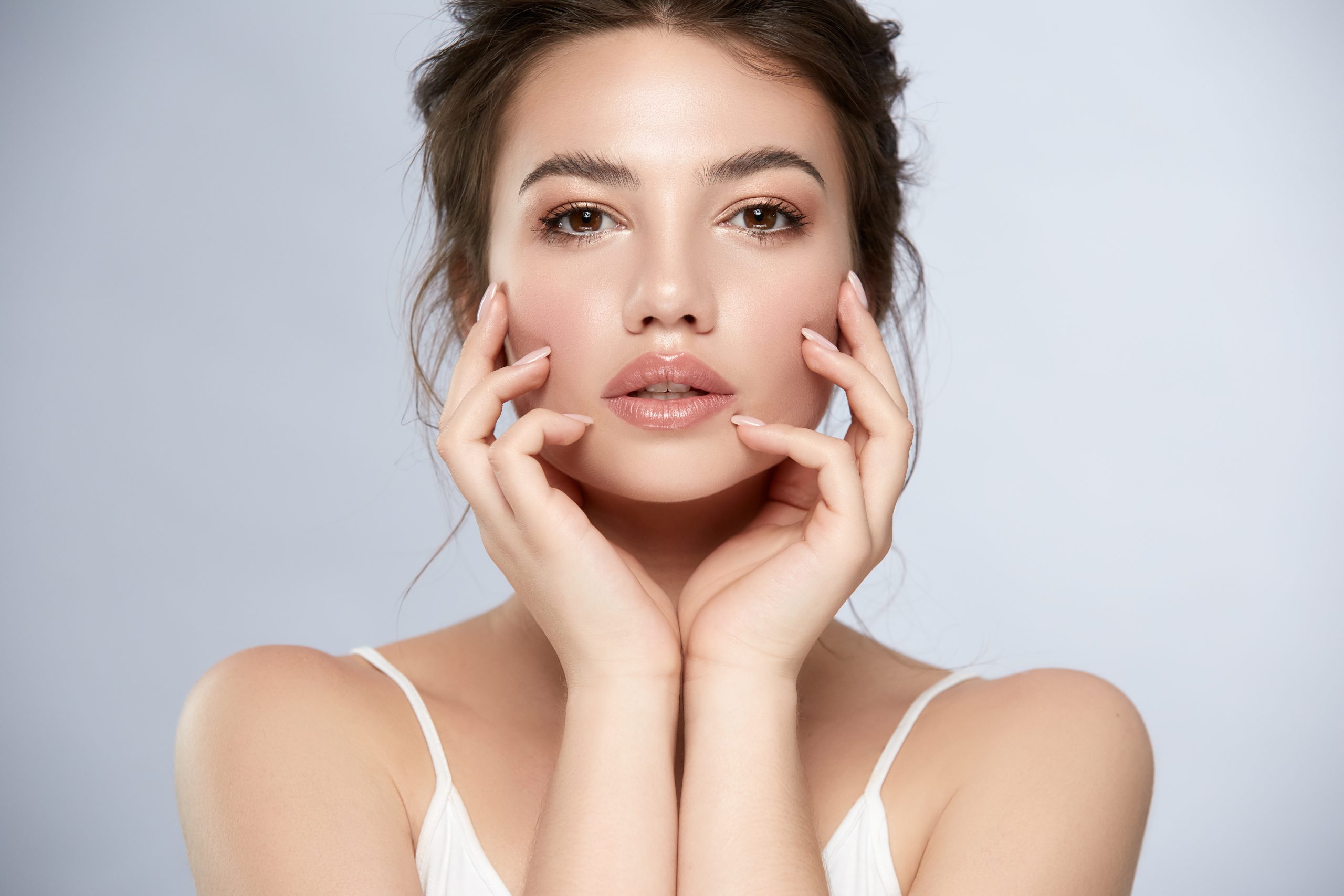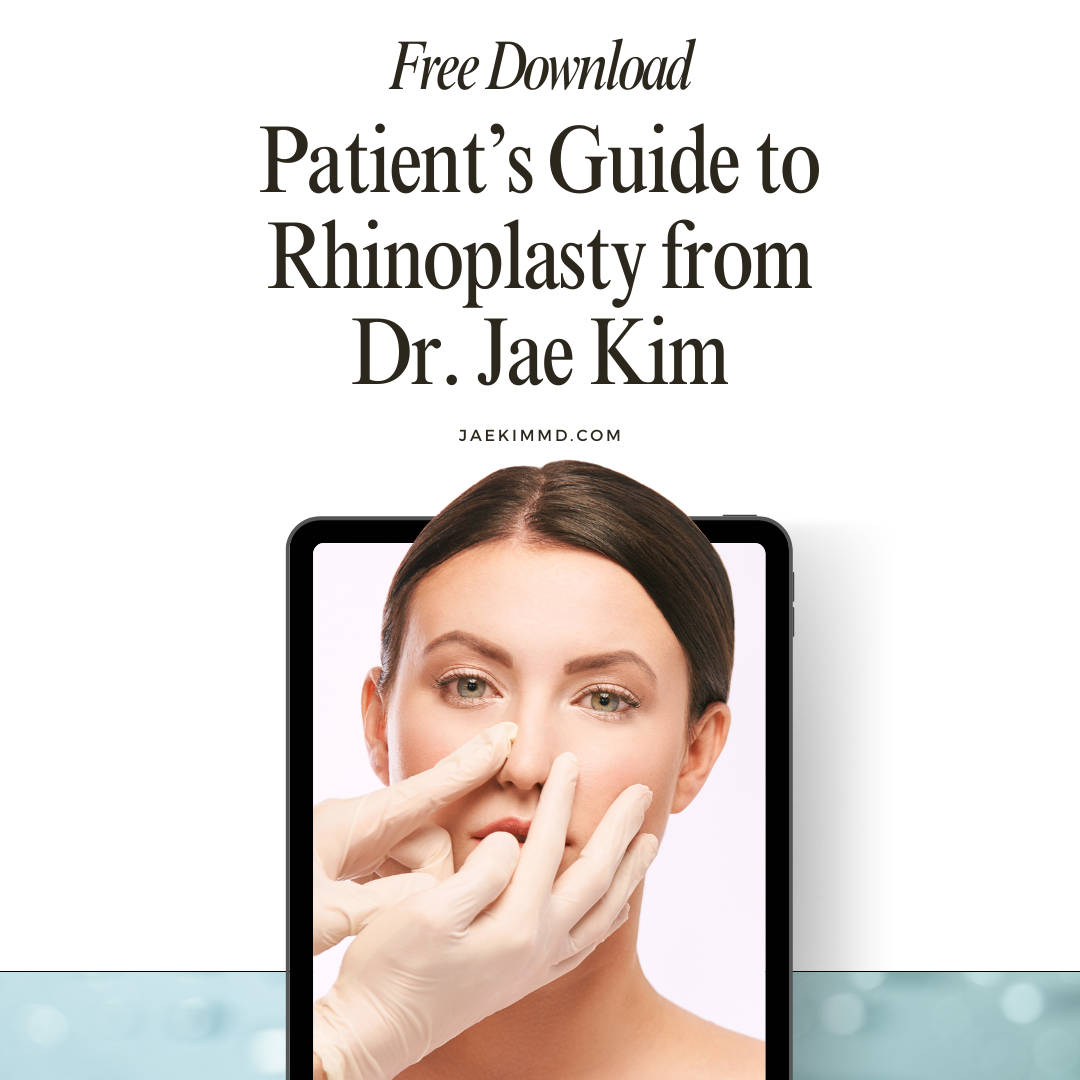
What Makes a Beautiful Jawline?
Jawlines are IN! The ideal jawline is a symbol of strength, youth, beauty, and confidence. More celebrities and influencers are showing off their jawlines, making the rest of us wonder what we should do about ours. Just scroll through your Instagram; how many influencers and celebrities flaunt their perfect faces! Some photos might have been altered with Photoshop and filters, but the point is, don’t you want it?
Whose jawlines would you consider pretty or desirable? What is it that makes them stunning? When I think of women, Bella Hadid, Angelina Jolie, and Olivia Wilde come to mind. When you look from the front, the line from the tip of the chin out to the mandibular angle is strong and smooth. The mandibular angle itself is well-defined, but it does not look bottom-heavy. When you look from the side, the lines from the chin down to the neck are seamless, and there is no fat or double chin. When I think of men with great jawlines, Brad Pitt, Chris Hemsworth, and Cristiano Ronaldo come to mind. What makes their jawlines so attractive? It boils down to straight lines and sharp chiseled angles, like a fine sculpture.



There are many ways to make the jawline more beautiful, but you cannot look at it in a vacuum. Is the jawline harmonious with the rest of the face? You want your facial profile to look like an upside down triangle. As you start from the top and work down, the contours should become narrower. A strong beautiful jawline that is out of proportion to the rest of the face can create a bottom-heavy look, which is not beautiful, especially for females. Jay Leno is the prime example of a bottom-heavy face, but because he is male and a comedian, his bigger chin and jawline are compatible with his overall persona.
The following parts determine the shape and contour of your jawline:
Skin – Beautiful healthy skin is essential when it comes to facial features. There are intrinsic factors that affect our skin over time, like genetics, and there are extrinsic factors, especially sun damage. It does not matter what you do to rejuvenate your jawline; if your skin is not healthy, it will not look as good, and the result will not last as long. Skincare is a lifelong process and requires dedication and consistency, but it is absolutely worth it.
Soft tissue – The soft tissue under the skin contains an elaborate framework of collagen and elastin. Collagen contributes to structure and volume, and elastin causes the bounce back you see in youthful skin. This framework becomes weaker and disorganized over time. Newer technologies for facial rejuvenation help stimulate the production and growth of soft tissue.
Muscles – The main muscle that defines the shape of the mandibular angle is called the masseter. Its function is to close the jaw, and pound for pound, it is one of the strongest muscles in the body. When you clench your teeth or bite chewy food, your masseters are doing hard work. The other major muscle along the jawline and neck is the platysma, which is shaped like a thin fan from the mandible all the way down to the collarbones. The aging process can make the platysma and soft tissue saggy, leading to a turkey neck appearance.
Tendons/Ligaments – These are continuous with the facial muscles in many parts of the face. The suspension apparatus called the SMAS gets looser as we get older. Jawline rejuvenation surgery like facelift and necklift surgery involves manipulating the SMAS and suspending it higher to bring back the more youthful appearance.
Salivary glands – The main gland that makes saliva for your mouth is called the parotid gland. There is one on each side of your jaw just in front of your ear. If your parotid glands become firm or enlarged, your face can look bottom-heavy, but more importantly, you should seek medical attention. The submandibular glands can also affect the appearance of your jawline and neck. They can drop over time and start to show a bulge in the upper neck. Some surgeons will reposition or trim part of the submandibular glands to improve the jawline. There is a risk of dry mouth, but on the other hand, the result could fall short of what you want if you leave them alone.
Fat under the chin (double chin) – Fat buildup in this area can be particularly frustrating, even for people who are not overweight. It seems to be the first to grow when you gain weight and the last to go when you lose weight. With age, this fat can sag and make a pooch under the jawbone. In anatomical studies, you see that there is fat just under the skin, but there is also deeper fat behind the platysma muscle. Removal of this fat creates a sharper more attractive jawline.
Bone – The ideal mandibular angle is sharp and full, and the front of the chin projects to about the level of the lower lip when you look from the side. Believe it or not, bone thins over time as well! The mandible can be shaped with synthetic implants or thicker filler materials. It can also be shaved down with saws and drills, as in V-line surgery.
Some of these features are what you were born with. For example, some people’s jawbones and chins are thinner or shorter than others. Other features are a result of time and gravity. These include atrophy or thinning, sagging, turkey neck, or jowling. The approach to treating jawlines should be different when it comes to features you were born with versus features related to aging.
One of the jawline and neck features that you cannot change is the position of your larynx, or voicebox. If your larynx is set higher and farther back, it accentuates and complements the length and contour of your mandible. A nice sharp angle demarcates the contour from the front of the chin down to the neck. The celebrities we mentioned above are naturally blessed in this way. If your larynx is set lower and farther forward, the angle from the chin to the neck is less sharp and more curved. No matter how aggressively you tug, pull, or tighten with any of the following procedures, your jawline and neck will appear heavier. Your proceduralist or surgeon should analyze your facial features and explain the expectations for your treatment accordingly.
How Do You Get an Awesome Jawline Contour?
You can work on the different structures of the jawline that make up the shape and contour. There is a very wide range of treatment options. Generally, younger patients can achieve very nice results without surgery. We can break down treatments into several categories: At home regimens and products, office injectables, minimally invasive procedures, and surgery.
At Home Exercises
There are various at home exercises and tutorials on the internet aimed at the toning the muscles of the jawline and neck. Some of the resources you find on Google or YouTube may help you. If you experience anything more than expected muscle soreness, stop and talk to a medical professional.
Jawzrsize is a product that works out your chewing muscles with about 40 pounds of resistance. Exercising your masseters can increase blood flow and muscle mass. The more you work out the muscle group, the more it will grow. The effect on your jawline is the appearance of a sharper angle.
A STRONG WORD OF CAUTION: if you suffer from jaw pain aka TMJ, or if you grind your teeth, jaw exercises may worsen your condition. If any of these exercises cause clicking or pain outside of expected muscle soreness, stop immediately and speak to a medical or dental professional.
Neck Creams
Don’t forget to take care of your neck skin! Compared to your facial skin, your neck skin is generally thinner and drier. It needs more moisturizing ingredients and sunscreen. All too often, sun damage on the neck and décolleté goes unchecked, leading to loose crepey dry skin in your 40s and beyond. Don’t leave your neck behind while taking care of your face, and don’t skimp on the products you use.
Genucel
Genucel and other creams you may have seen on infomercials advertise themselves as quick fix products that obviate the need for invasive procedures and surgery. One of the ingredients, Eyeseryl, is a peptide that is able to draw away swelling from your skin and make it appear tighter. The difference between Genucel and medical grade neck creams is that the main ingredient in Genucel draws something out of your skin. The key to healthy skin long-term is feeding your skin with great ingredients. Talk to your aesthetic or skincare professional about medical grade products for your neck and décolleté.
Botox
Botox injections can slim your jawline. This is a popular procedure that many of my Asian patients request. The masseter bulk determines the overall width of the jawline from the front view. When you clench or bite down, your jawline looks wider. Injections of Botox into your masseters cause them to relax and shrink over 6-8 weeks. It lasts up to 6 months. The reason this procedure is popular is because some patients want their cheeks and jawline to look slimmer than the upper and middle part of the face. Many Asian females want a slimmer lower third of the face so that features of the upper two thirds, including the eyes, appear larger. Masseter Botox also helps relieve symptoms for patients who suffer from TMJ or teeth grinding. You can still chew most foods without difficulty because you have other chewing muscles that pick up the slack.
Botox can relax muscle edges that stick out along your neck. Some people have really strong platysma muscles, and when they flex even a little bit, it looks like a web of cords from the jawline down to the collarbones. Strategically placed Botox injections along the upper neck, known as the Nefertiti lift, can improve the appearance of excessive muscle tone.
Filler
There are various filler products that can replenish lost volume and improve definition, angles, and projection. Filler can be placed along several areas. Thicker hyaluronic acid fillers and calcium hydroxyapatite fillers are good options. Shaping the front of the chin with filler works very nicely to make a short chin appear longer. The effect generally lasts about a year, sometimes longer. Your injector may use filler for your cheeks and midface as well to prevent a bottom-heavy look.
While technically not a filler, Sculptra (Poly-L-lactic acid) improves facial volume by stimulating long-term collagen production. It does take a while to notice an effect, so you must be patient with the treatment. Your injector places the material where volume is desired, and it dissolves over the next several days to weeks. Several months after that, your body responds to the injection by ramping up collagen production, which continues for up to two years. Sculptra was initially used for patients with HIV who suffered from facial hollowing and atrophy, known as lipodystrophy. It is now used to restore volume of the face. One area in particular where it works well is in front of the ear, where hollowing and atrophy are commonly overlooked.
Kybella
Kybella is an injection treatment of deoxycholic acid. For patients who do not want or qualify for surgery but want to get rid of the double chin, Kybella injections are performed in the office to melt away fat in a targeted manner. The ideal candidate has isolated fat without skin excess or laxity. When the fat melts away, the skin and soft tissue under your chin bounce back. If you have saggy skin along with fat, your chin can look even saggier once the fat melts away. Instead, you should have a procedure that treats the excess skin and soft tissue as well, some of which are described below. Make sure to seek out an injector who specifically received Kybella training. You may need more than one session to achieve the desired result.
Thread Lifting
Threading is a minimally invasive office procedure that can help improve jawline contour. The threads are inserted under the skin along the front of the ear. They have barbs along the length that hook the underlying soft tissue and suspend it for a more youthful jawline position. The threads dissolve over several months, and there is also evidence of residual collagen production for about a year. For younger patients who want a temporary effect, this is a good option. The flipside is that it can last shorter than expected, especially if you have thicker skin and looser soft tissue.
Energy-Based Treatments
This topic is worth a blog all by itself. Over the past 10-15 years, we have seen an explosion of technology in medical aesthetics. There are many devices out that that use heat energy to shrink wrap skin and make it tighter. Some transmit energy from the skin surface only, like Ultherapy. Others are more invasive and work by transmitting heat energy under the skin, like FaceTite or Renuvion. Some of these can be used along with surgery to complement a great result. Radiofrequency energy (RF) can be combined with the physical microtrauma of microneedling to stimulate healthier skin and tighten soft tissue. Some therapies include Vivace, Pixel8, and Morpheus8.
Surgery
Less invasive treatments are very popular because of the lower price and shorter downtime. Even though all the procedures listed so far are less invasive than surgery, they can come with some downtime as well and are not without risk. In general, they can yield very good results, but the gold standard of rejuvenation and transformation is still surgery in the hands of a skilled plastic surgeon. Also, there are some issues that only surgery can treat. One of those is the turkey neck, which comes from laxity and excess of the platysma muscle.
Implants
Two areas of the jawline can be augmented with implants: the front of the chin, known as the mentum, and the mandibular angles. Synthetic implants can be carefully placed in snug pockets created along the jawbone, sculpted to feel completely seamless. They can be inserted through an external surgical approach involving a skin incision, or through an internal surgical approach involving an incision in the mouth. The major advantage of the internal approach is there is no scar on the outside, and angular implants are easier to insert this way. The major advantage of the external approach is that there is no risk of germs in the mouth getting into the surgical area, which can potentially infect the implant.
Mandibular Contouring
If you want a slimmer tapered appearance to your jawline, surgery is an option. Mandible contouring, or V-line surgery, softens the lower third of the face permanently to appear more feminine. It is popular among Asian patients and also performed as part of facial feminization. The surgery is performed through the mouth, so there are no scars on the outside. The surgeon works along the bottom surface of the mandible to slim down and shape the bone. Your diet will be limited to liquids and purees for a couple weeks, and swelling and pain can be significant.
Liposuction
While it is considered surgery, liposuction can be performed in the office with local anesthesia. Like Kybella, the ideal patient for liposuction alone does not have skin excess or laxity. Risks of liposuction include removal of too little or too much fat, bruising and swelling. The benefit of liposuction over Kybella is that results are more consistent, and you likely won’t need multiple treatments. You can expect to wear a head wrap for the first few days to help compress the swelling. Most patients are ready to go out in public about 10-14 days after surgery.
Lower Face and Necklift
For patients whose jawlines have changed due to significant sagging and volume loss, lower facelift surgery with necklift is the most definitive option. This aging process can start as early as your 40s and is more obvious if you are thinner. The most obvious point where you see the jawline break is along marionette lines. Jowls form here as sagging skin and tissues bunch up at the mandibular ligament. This ligament, along with several others, is repositioned in facelift surgery, turning back the clock to a more youthful version of you. Surgery is also the only treatment where extra skin and tissue is cut away and permanently removed. Your facelift surgeon can also help the turkey neck bands, the fat under the chin and jawline, and even trim the salivary glands under the jawbone that can sink down and bulge. If you’re concerned about visible scars, the only scar that others might see is hidden in the fine lines in front of your ears. After surgery, you’ll be restaurant ready in about two weeks and back to full physical activity in four weeks.
Conclusion
Every person’s chin, neck, and jawline are uniquely beautiful, and there is no single treatment that works for everyone. The process may take more than one treatment session and more than one type of treatment. The expertise and credentials of the provider you choose are also critically important. Make sure that they are familiar with various treatment options for your jawline and are able to perform them safely and effectively. Make sure that they understand your goals and you trust them before undergoing jawline rejuvenation.
As a facial plastic surgeon, Dr. Jae Kim uniquely appreciates the anatomy, function, and beauty of the face and neck. To discuss your jawline concerns with Dr. Kim, call (703) 705-2100 or email info@jaekimmd.com today to schedule a consultation. Dr. Kim would be glad to discuss your facial beauty and treatment options to help you look and feel your best!
Whose jawlines would you consider pretty or desirable? What is it that makes them stunning? When I think of women, Bella Hadid, Angelina Jolie, and Olivia Wilde come to mind. When you look from the front, the line from the tip of the chin out to the mandibular angle is strong and smooth. The mandibular angle itself is well-defined, but it does not look bottom-heavy. When you look from the side, the lines from the chin down to the neck are seamless, and there is no fat or double chin. When I think of men with great jawlines, Brad Pitt, Chris Hemsworth, and Cristiano Ronaldo come to mind. What makes their jawlines so attractive? It boils down to straight lines and sharp chiseled angles, like a fine sculpture.


